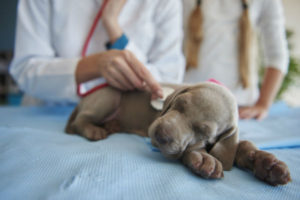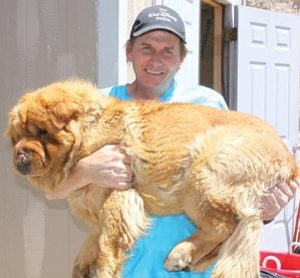
Many of us are still attempting to cope with one of the most senseless crimes in our lifetime, perhaps in our nation’s history – the cold-blooded murder of 20 children and six teachers. In the aftermath of this heinous crime, law enforcement, educators and mental health professionals are again asking themselves if there are ways we can predict and perhaps prevent such tragedies.
In a Dec. 22 USA Today article, “Predicting violent behavior isn’t easy,” experts described five characteristics that mass killers exhibit that lead to accurate predictions of who is most likely to kill. Those five characteristics are previous violent or aggressive behavior; being a victim of physical or sexual abuse; guns in the home; use of drugs or alcohol; and brain damage from a head injury.
I was surprised to find that one of the most recognized risk factors for future violence was not even mentioned: animal abuse.
Both the American Psychological Association and the FBI recognize animal abuse or torture as an important indicator of future violent behavior toward humans. So serious is animal abuse that it is a felony in every state except North and South Dakota. In Tennessee, even hunting for the “pleasure” of killing the animal without the purpose of hunting for food consumption is considered aberrant behavior.
Research has found that most animal abusers suffer from low self-esteem, lack of emotional maturity, feelings of resentment toward others or society, displaced aggression (the helpless animal is blamed for the killer’s unhappiness), loneliness, and an inability to establish constructive social relationships. Abusers often suffered from childhood neglect and/or physical abuse themselves. Animal abusers almost always suffer from mental illness and require professional treatment.
Arizona law stipulates that cruelty to animals is a Class 6 felony which, if convicted, could result in a year of jail time and as much as $150,000 in fines. According to Arizona State Statute § 13-2910 a person commits animal cruelty when the person intentionally, knowingly or recklessly subjects an animal to cruel neglect or abandonment; fails to provide medical attention necessary to prevent protracted suffering; inflicts unnecessary physical injury; or subjects an animal to cruel mistreatment.
So the big question is, can we predict (and hopefully prevent) who might commit heinous crimes, including mass murder? Some studies suggest that we can. Many researchers are confident that animal abuse is an early indicator of future violence towards humans. One study of 314 inmates published in the journal Child Abuse & Neglect (1997) conducted by University of Iowa professors Karla Miller and John Knutson found that a high percentage of the subjects charged with violent crimes, including murder, initially engaged in various types of animal cruelty.
There are more than 55 national organizations, including several in Arizona, whose mission it is to prevent, stop and help prosecute individuals who engage in animal cruelty. Reporting abusers not only protects our community, but may prevent the individual from committing serious crimes against humans, including mass murders and other highly aggressive and destructive behaviors in the future.
Any parent who sees this type of behavior in their children should immediately seek out professional help for the child. Treating animals cruelly are not isolated incidents; almost every serial killer has a history of animal abuse. This is a fact, not a coincidence.
If you want to help animal victims of cruelty in your community, please send a designated donation to your local animal shelter.
 I want to talk about senior cats. These lovable animals have many good years of love left – making them ideal pets for senior citizens.
I want to talk about senior cats. These lovable animals have many good years of love left – making them ideal pets for senior citizens.

 The term “bellwether” comes from the Middle English bellewether. It refers to the practice of placing a bell around the neck of a castrated ram (a wether) leading a flock of sheep. The movements of the flock can then be predicted (or followed) by hearing the bell without actually seeing the flock.
The term “bellwether” comes from the Middle English bellewether. It refers to the practice of placing a bell around the neck of a castrated ram (a wether) leading a flock of sheep. The movements of the flock can then be predicted (or followed) by hearing the bell without actually seeing the flock.
